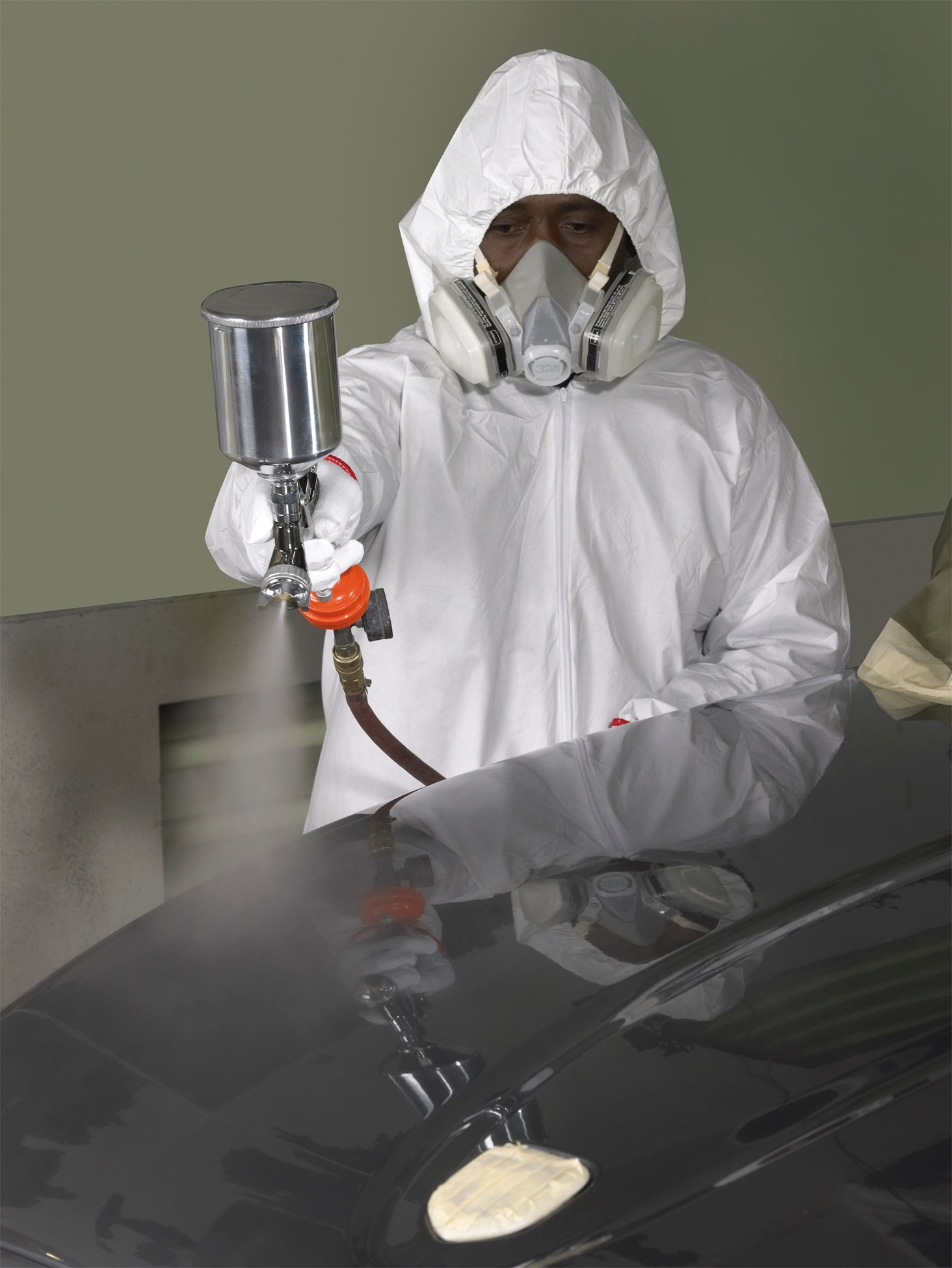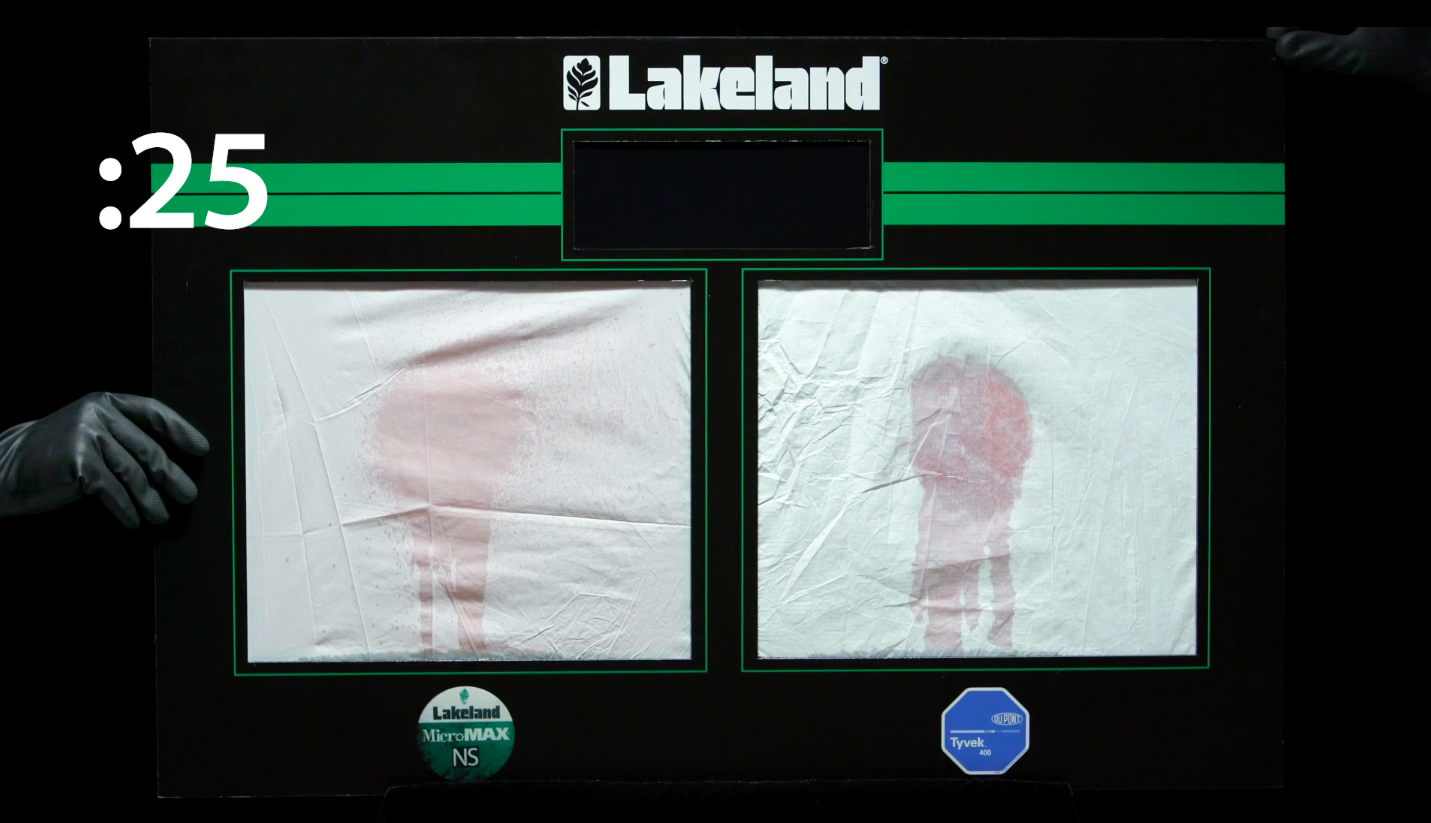 Do you work in an environment that poses significant risk for exposure to chemical and biological hazards? Industries that put workers in situations where they may be exposed to chemical splash, isocyanate paint, bloodborne pathogens and more, should first evaluate conditions of use when selecting appropriate chemical protective clothing.
Do you work in an environment that poses significant risk for exposure to chemical and biological hazards? Industries that put workers in situations where they may be exposed to chemical splash, isocyanate paint, bloodborne pathogens and more, should first evaluate conditions of use when selecting appropriate chemical protective clothing.
Too often, decisions are made based on price and aesthetic considerations when selecting protective clothing. Making decisions based on these factors can put workers at increased risk. Another unsafe selection practice includes making purchase decisions based on the brand or fabric that has always been worn and not taking the time to understand important research and test results to determine if the product is truly the best choice for the application.
While it is important to be cautious of data that is misunderstood or incorrectly applied, buyers should be aware that there is considerable data and chemical resources available in the marketplace. Here are a few garment features that are important to take into consideration when making an informed and appropriate chemical protective clothing purchase decision.
1. Strength and Durability
Many protective garments are put to the test in regard to strength and durability in many job functions. They not only come in contact with hazardous materials, but also with abrasive surfaces, machinery and rigorous movement by workers. The quality of a garment’s manufacturing is just as critical as the quality of the material. Seam construction, tightness and strength, as well as sizing and a manufacturer’s quality guarantee should be evaluated prior to making a garment selection.
2. Permeation, Degradation and Resistance to Liquid Penetration
Permeation is the process by which a chemical dissolves or moves through a protective garment. Degradation is the loss of or change in the fabric’s chemical resistance or physical properties due to exposure to chemicals, use, or ambient conditions (e.g., sunlight). Penetration is the movement of chemicals through zippers, stitched seams or imperfections in protective clothing material.
All chemicals will eventually permeate protective clothing if the condition permits. Permeation resistance is related to the concentration and temperature of the challenge chemical, environmental temperature and thickness of the barrier material. Higher temperatures can result in faster breakthrough and similarly, lower temperatures can lead to longer breakthrough for certain chemical and material combinations.
The selection of chemical-protective clothing should depend upon the type and physical state of the contaminants. Material testing outcomes should be evaluated and performance analyzed before selecting the best chemical protective garment for your unique work environment.
3. Flexibility and Dexterity
Protective garments should be made from materials that are flexible enough for the wearer to move and work in the safest ways possible. A garment that is inflexible or causes dexterity issues may contribute to accidents such as slips, trips and falls.
Gloves are an additional item to consider – when the material is too rigid, the wearer may have gripping issues that could lead to unnecessary risks.
4. Breathability and Comfort
A good fit ensures the protective garment provides the wearer with both comfort and adequate protection. Ill-fitting fitting garments run a higher risk of tearing and restrict movement, which can affect the wearer’s ability to carry out work safely and efficiently.
Similar to air permeability, there are many misconceptions related to garment breathability. How well a garment breathes is measured by its air permeability. Air permeability is measured by rate of airflow in cubic feet, per square foot of sample area per minute (CFM). Considering that a CFM of zero has no breathability, the difference in many chemical and biological material protective clothing’s breathability measurements are typically so small that they are insignificant.
5. Protection Against Bloodborne Pathogens
If you, or the employees you are responsible for, are at risk for coming into contact with blood and biological agents, you need to feel confident that the protective clothing they are wearing can stand up to Bloodborne Pathogens (BBPs). These are the infectious microorganisms in blood that can cause disease in humans.
Unlike in the US, performance tests in Europe are standardized and the results must be made public. Under EN 14126, the standard for protective clothing performance against infectious agents, we can objectively compare fabrics, allowing us to understand how these materials perform and compare to one another.
These are just a few of the factors to consider when selecting the best CPC for chemical and biological hazard protection. It is critical for users to take these five considerations into account, in addition to the comparative performance data available.
What challenges have you faced when selecting the best disposable and chemical protective clothing for your work environment?



